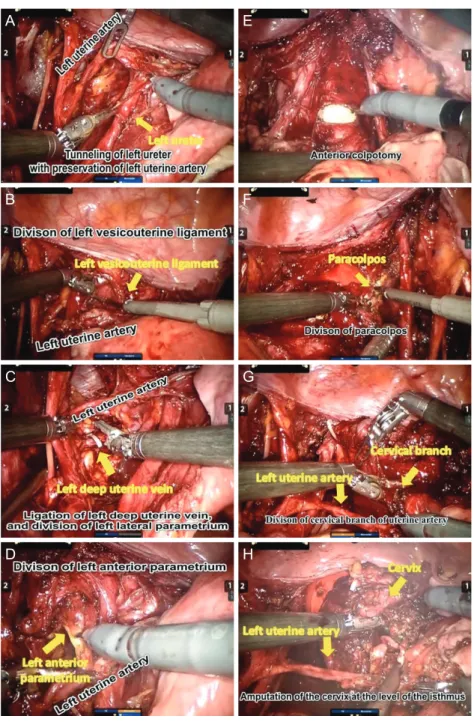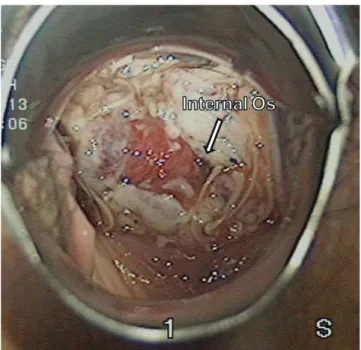Introduction
Since radical vaginal trachelectomy using the Dargent appro- ach was introduced to preserve fertility in 1994 [1], radical trachelectomy has become an alternative option for radical hysterectomy in young women with early stage cervical cancer who strongly wish to preserve fertility, and has been traditionally performed via a vaginal or abdominal approach.
Despite being minimally invasive procedure, vaginal radi- cal trachelectomy is a difficult approach due to the narrow field of view through the vagina, whereas abdominal radi- cal trachelectomy has advantages such as a wider view for resection and relatively shorter learning curve. However, the uterine arteries have been sacrificed in both procedures up till now despite the increasing expectation for better func- tionality of the remaining uterus [2,3].
Recently, laparoscopic or robot-assisted radical trachelec- tomy has been activated with the development of minimally invasive surgery. Therefore, delicate surgery preserving the pelvic autonomic nerves or uterine arteries has been more feasible [4]. Recurrence rates appear to be the same regard-
less of whether the trachelectomy is performed via the vagi- nal, abdominal, laparoscopic, or robotic approach.
However, obstetric limitations, including preterm birth and cesarean delivery, are still unresolved in women treated with radical trachelectomy [5]. Women were advised to deliver by cesarean section for permanent isthmus preservation. How- ever, in women who have undergone trachelectomy, it may be difficult to assess preterm birth because mid-trimester miscarriages and preterm labor may present with painless
Vaginal delivery after robot-assisted uterine artery-
preserving radical trachelectomy for early-stage cervical cancer
Nara Lee, MD 1 , Jaehee Mun, MD 2 , Soo Jin Park, MD 2 , Eun Ji Lee, MD 2 , Seungmee Lee, MD 3 , Hee Seung Kim, MD, PhD 2
1

